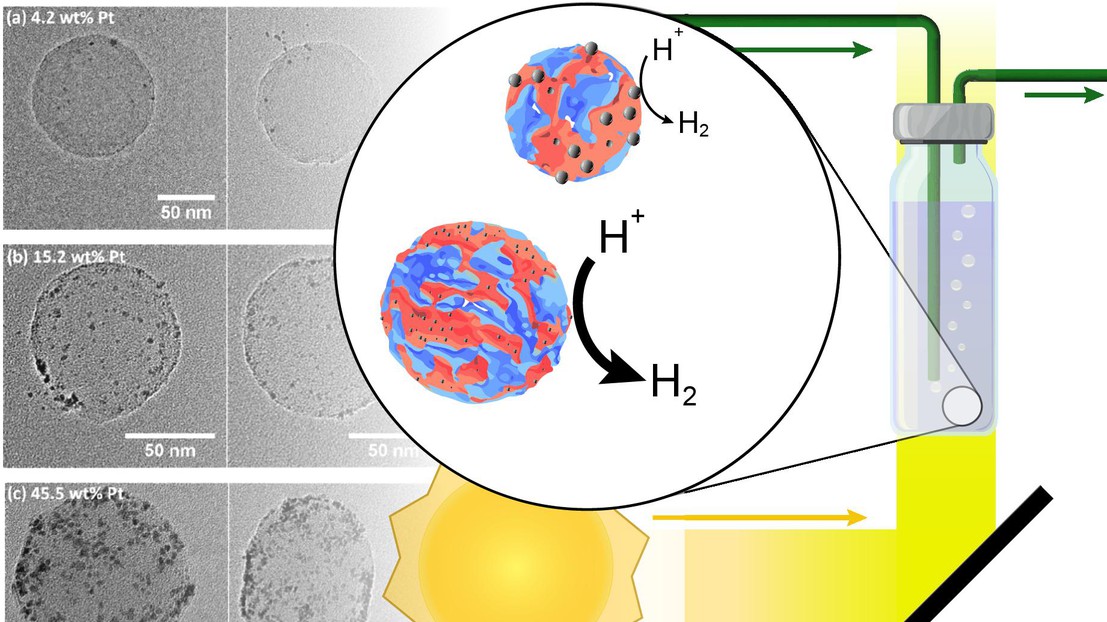New insights into organic semiconductor nanoparticles for solar H2

© 2025 EPFL
Connor Firth develops a new method for co-catalyst deposition which shows improved performance in a paper published in Advanced Energy Materials.
Making hydrogen fuel from sunlight using organic semicondutor nanoparticles needs small amounts of metals like platinum (Pt) as co-catalysts to work well. But it's hard to control how much platinum is added and where it ends up on the particles. Connor's study introduces a new method that carefully controls the amount and shape of platinum added by stopping the process early and washing away leftovers. Using this method, the he achieved improved hydrogen production, especially when platinum was spread out in tiny amounts instead of clumping. This approach uses less platinum and works much better, offering a smarter, more efficient way to produce solar hydrogen.
NCCR catalysis